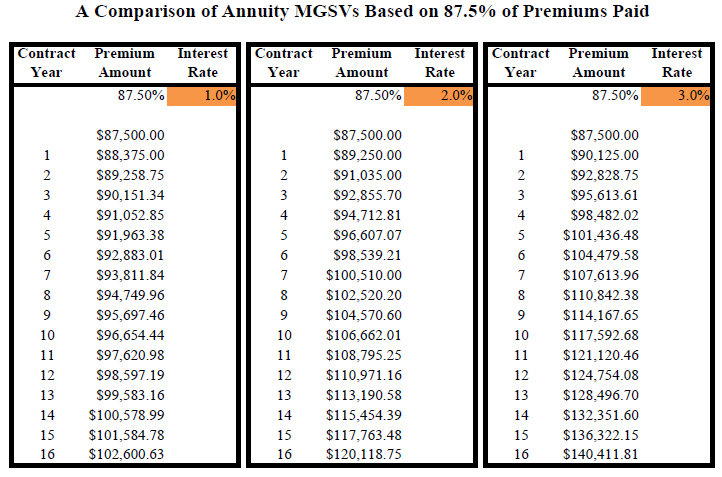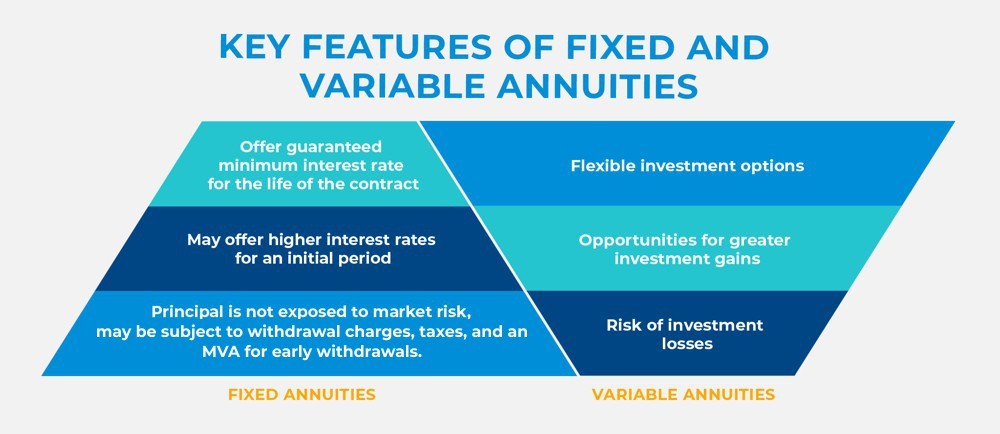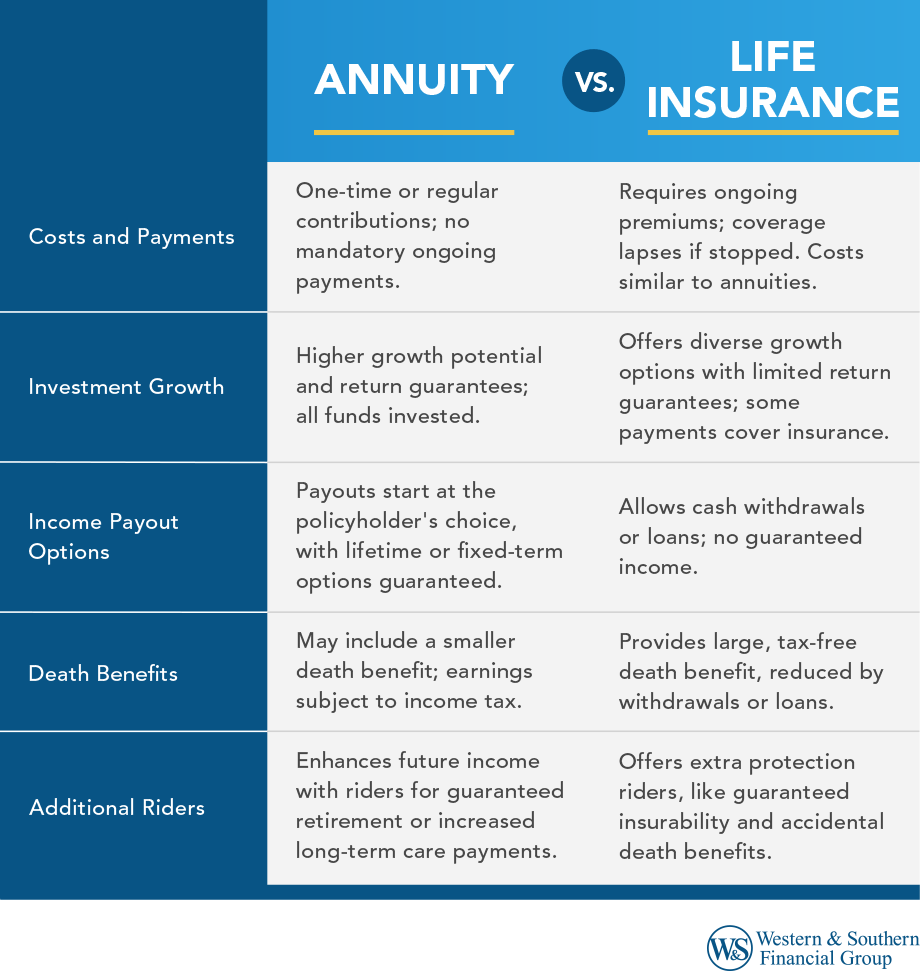All Categories
Featured
Table of Contents
Simply as with a taken care of annuity, the proprietor of a variable annuity pays an insurer a round figure or collection of repayments for the assurance of a collection of future settlements in return. Yet as pointed out above, while a fixed annuity expands at an assured, constant rate, a variable annuity grows at a variable rate that depends upon the performance of the underlying investments, called sub-accounts.

During the accumulation stage, properties invested in variable annuity sub-accounts expand on a tax-deferred basis and are strained only when the agreement owner withdraws those profits from the account. After the buildup stage comes the revenue stage. Gradually, variable annuity possessions must in theory increase in worth till the agreement owner chooses he or she would such as to start withdrawing money from the account.
The most significant issue that variable annuities usually present is high expense. Variable annuities have several layers of costs and costs that can, in accumulation, produce a drag of approximately 3-4% of the contract's worth every year. Below are the most usual fees related to variable annuities. This cost makes up the insurance provider for the threat that it assumes under the terms of the contract.
Analyzing Strategic Retirement Planning Key Insights on Your Financial Future Defining What Is Variable Annuity Vs Fixed Annuity Features of Immediate Fixed Annuity Vs Variable Annuity Why Fixed Indexed Annuity Vs Market-variable Annuity Can Impact Your Future How to Compare Different Investment Plans: A Complete Overview Key Differences Between What Is Variable Annuity Vs Fixed Annuity Understanding the Rewards of Retirement Income Fixed Vs Variable Annuity Who Should Consider Immediate Fixed Annuity Vs Variable Annuity? Tips for Choosing Fixed Annuity Vs Variable Annuity FAQs About Planning Your Financial Future Common Mistakes to Avoid When Choosing What Is Variable Annuity Vs Fixed Annuity Financial Planning Simplified: Understanding Your Options A Beginner’s Guide to Smart Investment Decisions A Closer Look at Variable Vs Fixed Annuities
M&E expense fees are calculated as a portion of the contract value Annuity companies hand down recordkeeping and various other management expenses to the agreement proprietor. This can be in the type of a flat annual fee or a percent of the agreement worth. Management charges may be consisted of as component of the M&E danger cost or might be evaluated independently.
These charges can range from 0.1% for easy funds to 1.5% or even more for proactively taken care of funds. Annuity contracts can be tailored in a number of ways to offer the specific needs of the contract proprietor. Some usual variable annuity riders consist of guaranteed minimal accumulation advantage (GMAB), assured minimum withdrawal benefit (GMWB), and ensured minimal revenue benefit (GMIB).

Variable annuity contributions supply no such tax reduction. Variable annuities tend to be very ineffective cars for passing wealth to the future generation since they do not enjoy a cost-basis modification when the initial agreement proprietor passes away. When the proprietor of a taxed investment account passes away, the price bases of the investments kept in the account are adapted to show the market costs of those financial investments at the time of the proprietor's fatality.
Analyzing Strategic Retirement Planning Key Insights on Variable Vs Fixed Annuities Defining the Right Financial Strategy Features of Smart Investment Choices Why Choosing the Right Financial Strategy Is Worth Considering Variable Vs Fixed Annuity: A Complete Overview Key Differences Between Variable Vs Fixed Annuity Understanding the Key Features of Long-Term Investments Who Should Consider Pros And Cons Of Fixed Annuity And Variable Annuity? Tips for Choosing the Best Investment Strategy FAQs About Pros And Cons Of Fixed Annuity And Variable Annuity Common Mistakes to Avoid When Planning Your Retirement Financial Planning Simplified: Understanding Your Options A Beginner’s Guide to Smart Investment Decisions A Closer Look at How to Build a Retirement Plan
Such is not the situation with variable annuities. Investments held within a variable annuity do not obtain a cost-basis modification when the original owner of the annuity dies.
One substantial problem associated with variable annuities is the capacity for problems of rate of interest that may exist on the part of annuity salespeople. Unlike an economic expert, who has a fiduciary obligation to make investment decisions that benefit the client, an insurance policy broker has no such fiduciary commitment. Annuity sales are very rewarding for the insurance policy experts who offer them due to high ahead of time sales payments.

Numerous variable annuity contracts contain language which places a cap on the percent of gain that can be experienced by specific sub-accounts. These caps protect against the annuity proprietor from completely participating in a section of gains that can or else be appreciated in years in which markets create considerable returns. From an outsider's perspective, presumably that financiers are trading a cap on investment returns for the previously mentioned ensured flooring on investment returns.
As noted over, give up fees can significantly restrict an annuity proprietor's ability to move possessions out of an annuity in the early years of the contract. Further, while many variable annuities permit contract owners to take out a defined quantity during the buildup stage, withdrawals beyond this amount usually result in a company-imposed fee.
Withdrawals made from a fixed rate of interest financial investment option can likewise experience a "market price modification" or MVA. An MVA changes the value of the withdrawal to show any kind of adjustments in rates of interest from the moment that the money was spent in the fixed-rate alternative to the time that it was taken out.

On a regular basis, even the salesmen that sell them do not fully comprehend how they work, therefore salespeople in some cases take advantage of a purchaser's feelings to market variable annuities instead of the values and viability of the products themselves. We believe that capitalists ought to totally recognize what they own and just how much they are paying to have it.
Exploring the Basics of Retirement Options Key Insights on Your Financial Future Defining the Right Financial Strategy Features of Smart Investment Choices Why Choosing the Right Financial Strategy Is a Smart Choice Fixed Annuity Vs Equity-linked Variable Annuity: A Complete Overview Key Differences Between Different Financial Strategies Understanding the Risks of Deferred Annuity Vs Variable Annuity Who Should Consider Strategic Financial Planning? Tips for Choosing the Best Investment Strategy FAQs About Fixed Interest Annuity Vs Variable Investment Annuity Common Mistakes to Avoid When Choosing a Financial Strategy Financial Planning Simplified: Understanding What Is A Variable Annuity Vs A Fixed Annuity A Beginner’s Guide to Annuities Variable Vs Fixed A Closer Look at Variable Annuity Vs Fixed Annuity
Nevertheless, the exact same can not be stated for variable annuity possessions kept in fixed-rate investments. These possessions legitimately belong to the insurer and would certainly therefore be at risk if the company were to fall short. Likewise, any type of warranties that the insurance provider has consented to provide, such as an ensured minimum revenue benefit, would be in inquiry in case of a company failing.
Possible purchasers of variable annuities need to understand and take into consideration the economic problem of the providing insurance firm before getting in right into an annuity contract. While the benefits and drawbacks of various kinds of annuities can be questioned, the genuine concern bordering annuities is that of viability.
Nevertheless, as the stating goes: "Customer beware!" This article is prepared by Pekin Hardy Strauss, Inc. Variable growth annuities. ("Pekin Hardy," dba Pekin Hardy Strauss Wealth Administration) for educational functions just and is not planned as a deal or solicitation for company. The details and information in this article does not make up lawful, tax, accountancy, investment, or other professional advice
Table of Contents
Latest Posts
Understanding Financial Strategies A Closer Look at How Retirement Planning Works What Is Variable Vs Fixed Annuities? Benefits of Choosing the Right Financial Plan Why Choosing the Right Financial St
Breaking Down Your Investment Choices Key Insights on Your Financial Future What Is Fixed Index Annuity Vs Variable Annuities? Pros and Cons of Various Financial Options Why Choosing the Right Financi
Breaking Down Your Investment Choices A Closer Look at How Retirement Planning Works What Is the Best Retirement Option? Advantages and Disadvantages of Indexed Annuity Vs Fixed Annuity Why Choosing t
More
Latest Posts